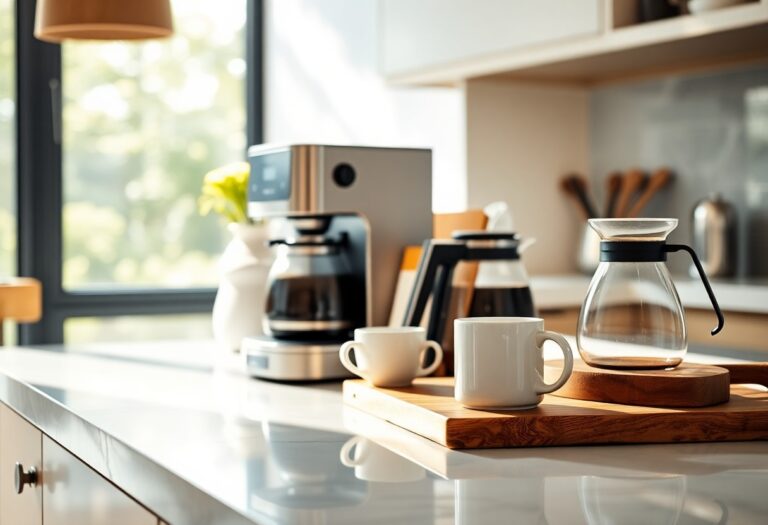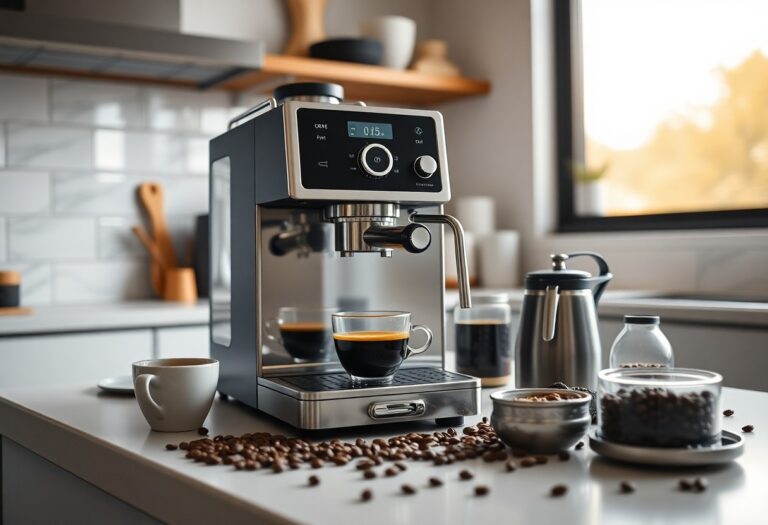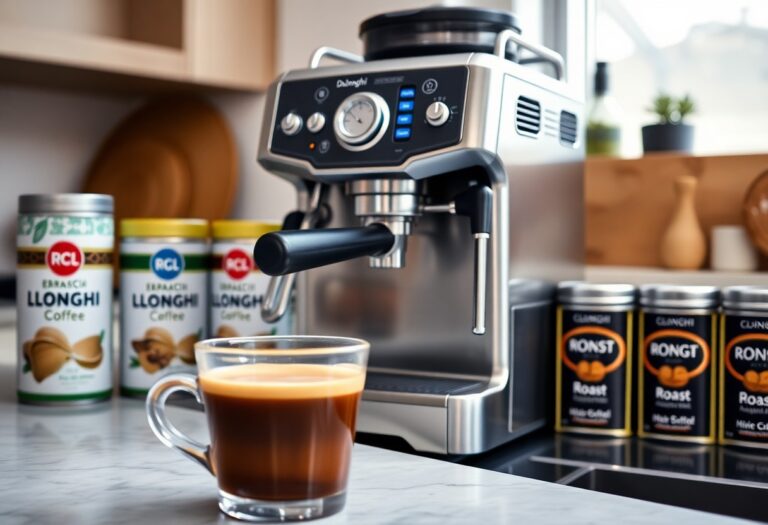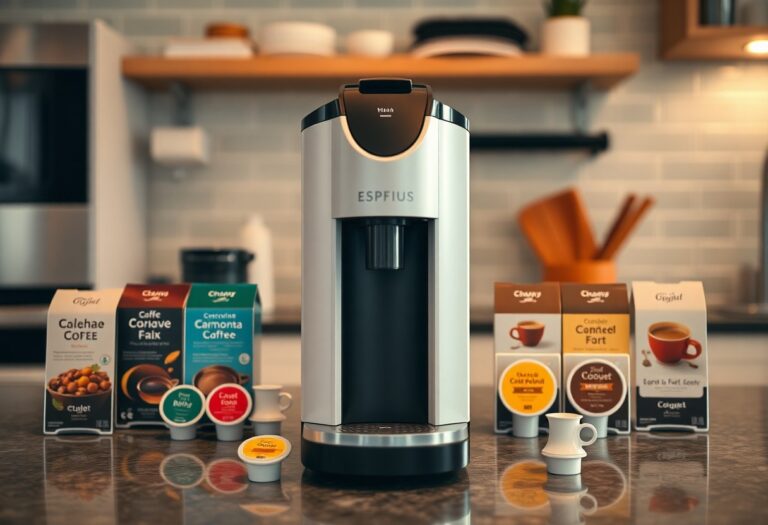What Coffee Machine Makes the Hottest Coffee: Temperature Guide
What Coffee Machine Makes the Hottest Coffee: Temperature Guide reveals that coffee machines have different brewing temperatures, which directly affects how hot your coffee is when served. While some machines brew within the ideal range of 195°F to 205°F for hotter coffee, others operate at lower temperatures, resulting in cooler servings.
Various types of coffee machines have their own brewing techniques and temperature controls:
- Drip coffee makers usually heat water close to the upper end of the ideal range.
- Espresso machines use pressure extraction at slightly lower water temperatures but produce concentrated, hotter shots.
- Single-serve pod machines combine high pressure with precise temperature control for a hot brew.
Key takeaway: If you want the hottest coffee possible, consider getting an espresso machine or a single-serve pod system. These options consistently deliver higher serving temperatures than other brewing methods.
Understanding Brewing Temperature and Its Impact on Coffee Hotness
Brewing temperature plays a crucial role in determining the hotness and flavor of your coffee. Here’s why it matters:
1. Definition of Brewing Temperature
Brewing temperature refers to the heat at which water interacts with coffee grounds during the brewing process. This temperature directly impacts how effectively flavors are extracted from the grounds.
2. Impact on Coffee Hotness
Different brewing temperatures can result in varying degrees of hotness in your coffee. For instance:
- Higher Temperatures: Brewing at higher temperatures, closer to the upper end of the ideal range (195°F to 205°F), can lead to hotter coffee output.
- Lower Temperatures: Conversely, brewing at lower temperatures may result in a milder or lukewarm cup of coffee.
3. Variations Across Machines
Various types of coffee machines have distinct brewing temperature ranges that influence the final hotness of the coffee they produce:
- Espresso Machines: Known for brewing at high temperatures, espresso machines typically deliver hotter shots due to their pressure extraction method.
- Single-Serve Pod Machines: Utilizing precise temperature control and high-pressure systems, these machines are designed to produce consistently hot brews.
- Drip Coffee Makers: While drip machines may not reach extreme temperatures like espresso machines, they strike a balance between heat levels and flavor extraction.
Understanding how brewing temperature affects your coffee’s hotness can help you choose a machine that aligns with your preferences for a piping hot cup of joe.
1. Espresso Machines: Masters of High Heat
Espresso machines are widely recognized for their ability to brew coffee at high temperatures combined with intense pressure. This category of coffee machines stands out when considering What Coffee Machine Makes the Hottest Coffee: Temperature Guide, mainly because of their unique brewing method and temperature control.
High Brewing Temperature with Pressure Extraction
Espresso machines typically use water heated to approximately 90°C (194°F), which falls within the ideal brewing range but is slightly lower than some drip coffee makers. The key difference lies in how this water is forced through finely ground coffee under high pressure—usually around 9 bars or higher. This pressure extraction method:
- Forces hot water quickly through compacted coffee grounds
- Extracts concentrated flavors rapidly
- Results in a thicker, more intense espresso shot
- Produces coffee that maintains a higher serving temperature despite the slightly lower brewing temperature
Due to this pressurized extraction, espresso shots tend to feel hotter when consumed immediately, compared to drip coffee that may cool down during a longer brewing cycle or transfer process.
Super-Automatic Espresso Machines
Super-automatic espresso machines take this heat consistency to another level by automating every part of the brewing process—from grinding beans to tamping and extracting espresso. These machines maintain tight control over temperature and pressure, ensuring each cup hits the target heat zone repeatedly. Key features include:
- Integrated grinders calibrated for optimal particle size, which affects heat extraction
- Electronic thermostats that keep water temperature stable around 90°C (194°F)
- Pressure pumps that deliver consistent force for uniform extraction
- Built-in milk frothers that add steamed milk at precise temperatures without lowering overall cup heat
With super-automatic models, you get the convenience of a hands-off approach while still benefiting from the consistently hot brews typical of traditional espresso machines. Their design minimizes heat loss during preparation and serving phases by controlling all variables tightly.
Why Espresso Machines Excel in Hot Coffee Production
The combination of precise temperature regulation and high-pressure extraction creates an ideal environment for producing piping hot coffee shots. While other methods may reach similar or even higher water temperatures, they lack the rapid pressurized extraction that keeps espresso hotter upon serving.
This makes espresso machines a top choice for anyone prioritizing hotness alongside rich flavor concentration in their daily cup. Super-automatic options further simplify achieving this balance without manual effort.
Interestingly, the environmental impact of using such machines can be managed effectively with proper guidelines, ensuring we enjoy our hot brews while being mindful of our surroundings.
2. Single-Serve Pod Machines: Conveniently Hot Coffee
Single-serve pod machines, including popular options like Nespresso Vertuo systems, offer a practical way to enjoy hot coffee quickly and with minimal effort. These machines use pre-packaged pods containing ground coffee, ensuring consistent quality and flavor without the mess of traditional brewing methods.
How Single-Serve Pod Machines Keep Your Coffee Hot
Key aspects of single-serve pod machines contributing to hotter coffee include:
- High-pressure extraction: Similar to espresso machines, many pod systems operate at high pressure, forcing hot water through the coffee grounds rapidly. This process extracts flavors efficiently while maintaining elevated temperatures in the final cup.
- Precise temperature control: Advanced electronics regulate water temperature precisely, often keeping it within the ideal brewing range of 195°F to 205°F (90°C to 96°C). This control minimizes heat loss during extraction and maximizes the hotness of your coffee.
The Nespresso Vertuo line exemplifies these features by combining centrifugal brewing technology with accurate heating elements. The result is a cup served at a temperature that rivals or exceeds many drip coffee makers. This makes single-serve pod machines an excellent choice for those who want reliably hot coffee without complex preparation steps.
The convenience factor pairs well with reliable heat delivery, making this category a strong contender for anyone prioritizing hot coffee served fast.
3. Drip Coffee Makers: A Balancing Act Between Temperature and Flavor
While drip coffee makers may not reach the same extreme temperatures as espresso or single-serve machines, they still have their place in producing delicious cups of joe. Drip machines offer a different brewing experience, focusing on achieving a balance between heat levels and flavor extraction.
Drip coffee makers are designed to brew coffee at temperatures generally ranging from 195°F to 205°F, falling within the ideal range for extracting rich flavors without scalding the coffee grounds. While they may not reach the ultra-high temperatures of espresso machines, drip brewers excel in their ability to create flavorful and aromatic coffee through a slower brewing process.
Thermostat Settings in Drip Machines
The thermostat settings on drip coffee makers play a crucial role in determining the brewing temperature and, consequently, the hotness of the final coffee. By adjusting these settings, users can customize their brewing experience to achieve their desired coffee temperature.
- Temperature Range: Drip machines typically allow users to adjust the thermostat within a specific range. Some models offer preset temperature options, while others provide manual control over the brewing temperature. This flexibility enables coffee lovers to experiment with different heat levels to find their perfect cup.
- Influence on Flavor: The thermostat settings not only affect the hotness of the brewed coffee but also impact the flavor profile. Lower temperatures can lead to under-extraction, resulting in weak or sour-tasting coffee, while higher temperatures may cause over-extraction, leading to bitterness. Finding the right balance is key to unlocking the full potential of your coffee grounds.
- Post-Brew Temperature: The thermostat settings also influence how hot the coffee remains after brewing. By selecting a higher temperature setting, you can ensure that your coffee stays warm for longer periods, providing an enjoyable drinking experience from the first sip to the last drop.
Drip coffee makers may not produce the hottest coffee compared to espresso machines or single-serve pod systems. Still, they offer a unique brewing approach that prioritizes flavor development and aroma preservation. By understanding and adjusting the thermostat settings on your drip machine, you can tailor your coffee-making process to suit your preferences and enjoy a delicious cup of joe every time.
Other Factors That Contribute To Serving Hot Coffee From Your Machine Of Choice
-
Cup Insulation: Ensuring your coffee mug or carafe has proper insulation can significantly help in maintaining the coffee’s hotness for a longer period after brewing.
-
Post-Brew Warming Features: Some coffee machines come with additional features such as heated plates or post-brew warming functions that help keep the brewed coffee at an optimal temperature until you’re ready to enjoy it.
Beyond the brewing process itself, these factors play a crucial role in serving up a piping hot cup of joe. Don’t overlook the importance of cup insulation and post-brew warming features to enhance your coffee-drinking experience.
Conclusion
When it comes to brewing the perfect cup of coffee, temperature plays a crucial role. The ideal brewing temperature for most coffee types is between 195°F and 205°F (90°C to 96°C). However, different coffee machines have their own unique features and capabilities that can affect the final temperature of your brew.
In this guide, we’ve explored various coffee machines and their temperature ranges to help you make an informed decision. Whether you prefer the convenience of automatic machines or enjoy the hands-on experience of manual brewing methods, there’s a coffee machine out there that suits your needs.
Ultimately, the best coffee machine for you is the one that aligns with your personal preferences and lifestyle. Consider factors such as:
- Convenience: If you’re always on the go and need a quick cup of coffee in the morning, an automatic machine with programmable settings might be ideal for you.
- Manual Involvement: If you enjoy the art of brewing and want full control over every step of the process, a manual pour-over or French press may be more suitable.
- Versatility: If you like experimenting with different brewing techniques and flavors, look for machines that offer flexibility in terms of grind size, water temperature, and extraction time.
Remember, finding the right coffee machine is a personal journey. Take into account your preferences, lifestyle, and brewing habits when making your decision. With the right equipment in hand, you’ll be able to brew deliciously hot cups of coffee that satisfy your cravings every time.







